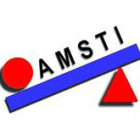
Coming From Behind, Alabama Education Program Paying Off
|
Following disheartening National Assessment of Educational Progress marks in 1996, the Alabama State Department of Education (ASDE) introduced a program, the Alabama Math, Science and Technology Initiative (AMSTI) to improve the state’s lagging test scores. The National Center for Education Evaluation and Regional Assistance, part of the Institute of Education Sciences, recently published an evaluation of the effectiveness of the Alabama initiative
The evaluation compared test scores of class groups that had received AMSTI instruction for one year with a control group that did not. Research findings indicated that students that had received AMSTI instruction scored, on average, two points higher on Stanford Achievement Test (SAT-10) mathematic problem solving assessments than students that had not received initiative instruction. Researchers estimate the total “effects” of a full two years of AMSTI instruction to average an increase of 4 percentile points on SAT-10 mathematic problem solving assessments, with AMSTI students having the equivalent of “50 days of additional student progress over students receiving conventional mathematics instruction.”
Similarly, AMSTI students were found to have higher test scores in both reading achievement and science than non-initiative-instructed students. The report finds AMSTI pupils scoring an average of 2 percentile points, roughly the equivalent of 40 additional days of student progress, than students that had received no AMSTI instruction.